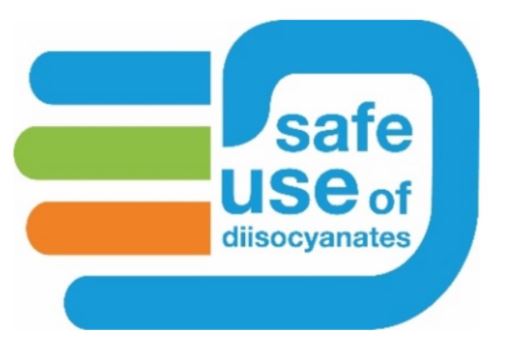
FAQ regarding EU REACH regulation on diisocyanates
At TEKNOS safety is a cornerstone of our operations, thus we are fully committed to provide the most relevant and up-to-date information about our products and requirements related to them. On 4th August 2020, a restriction on diisocyanates under REACH regulation was adopted by the European Union authorities. The Regulation specifies the need for labelling and training requirements for industrial and professional users of diisocyanates (individually or in combinations) with a concentration greater than 0,1 % by weight.
We understand that the new regulations may raise some questions and require additional explanation and clarification regarding actions that must be taken to meet the requirements. Please find below Frequently Asked Questions regarding restrictions on diisocyanates. If you have any further questions, please contact our local sales teams.
What are Diisocyanates?
Diisocyanates with polyols are chemical building blocks of polyurethanes used in a wide range of sectors and applications. Polyurethane is effectively derived from the chemical reaction between diisocyanates and polyols; when mixed together they polymerise. Polyurethanes would not exist without diisocyanates and polyols.
There are many types of diisocyanates, the foremost of which are: aromatic diisocyanates including methylene diphenyl diisocyanate (MDI) and Toluene diisocyanate (TDI); and hexamethylene diisocyanate (HDI), methylene dicyclohexyl diisocyanate or hydrogenated MDI (HMDI) and isophorone diisocyanate (IPDI), which are aliphatic isocyanates.
Why do we have to have this training? Why is there legislation for Diisocyanates?
Diisocyanates have a harmonised classification as a respiratory sensitiser category 1 and as a skin sensitiser category 1 according to Regulation (EC) No 1272/2008 of the European Parliament and of the Council.
The restriction aims to limit the use of diisocyanates in industrial and professional applications to those cases where a combination of technical and organisational measures are implemented, and a minimum standardised training course has been followed. Appropriate training is a necessity, and every worker handling diisocyanates should have a sufficient knowledge of the hazards of these substances and an awareness of the risks related with their uses, as well as sufficient knowledge of good working practices and appropriate risk management measures (RMMs), including the correct use of appropriate personal protective equipment. Particular training measures are needed to raise the awareness about the importance of health protection by means of appropriate RMMs and safe handling practices. You are obliged to have this training to ensure that workers can continue to handle diisocyanates safely.
What is the potential risk from Diisocyanates?
It was indicated that respiratory sensitisation, due to both dermal and inhalation exposure to diisocyanates, leads to occupational asthma in workers, which has been identified as a significant occupational health problem in the Union. The annual number of new occupational diseases caused by diisocyanates (estimated to be more than 5000 cases) is considered unacceptably high.
Why are Diisocyanates still used?
Polyurethanes are versatile, modern and safe. They are used in a wide range of applications to create a variety of consumer and industrial products that play a crucial role in making our lives more convenient, comfortable, and sustainable.
Do we need to invest /use more PPE when using these products?
The restriction does not detail the use of specific PPE, it requires only that the user understand the requirements of working safely with Diisocyanates in the different settings. PPE requirements differ depending on product, application, and end use. PPE requirements are detailed on individual product MSDS/ TDS.
What products are affected and how do I know if I need training?
At TEKNOS we have carefully reviewed our product range and only some of the products in the Teknodur, Teknopur, Teknoblade, Inerta 700, and Feidopur, (polyurethane, polyurea, and epoxy paints cured with isocyanates) ranges are affected. Before using a product from the above listed product families, please always check the label, safety data sheet or contact our customer service.
Is it possible to have alternative products?
Currently there are few effective alternatives to isocyanates and the benefits they bring to certain products. However, at Teknos we are always innovating and looking for new formulations and raw materials to make our products more sustainable. Depending on end use and specific requirements in some instances there may be alternative products available. Please discuss your requirements with your local Teknos sales representative.
How do I access the training?
Go to the Safe Use of Diisocyanates website to read more about the training requirements and how they might apply to you. Ensure that you sign-up for updates on the availability of trainings in your local langue and other relevant news on the safe use of diisocyanates.
How much does the training cost?
Training costs will differ depending on how the end user accesses the training, (classroom, online, webinar etc..) who supplies the training and the region in which the training is received. ISOPA/ALIPA training will be available to all, and costs are available online.
Is Teknos offering training?
Teknos is in the process of developing an online and or classroom training in line with the REACH Requirements. This training will be available in a limited range of languages. If you are interested in finding out more about the Teknos training courses, please contact your local representative.
Do I need to do anything right now?
The training will be conducted either as classroom training/virtual classroom training or as online training in house, by a consultant or by public authorities. The training may be conducted through accredited trainers. You do not need to take action right now other than to make yourself aware of how this affects you and your business. However, in order to continue using products containing diiisocyantes you will need to ensure that you and your employees are trained by August 2023.
How long will the training take?
It depends on the level of training required and any additional national regulations. The basic level of training will take about 1 hour. It is expected that the full training will take a minimum of three hours.
Can the training be done locally?
Yes. The training shall comply with the provisions set by the Member State in which the user(s) operate. Take into consideration that Member States may implement additional requirements reagrding the continued use of the substance(s) or mixture(s). Training material and courses must be provided in official language(s) of the Member State(s) where the substance(s) or mixture(s) are supplied. The training shall take into consideration the specificity of the products supplied, including composition, packaging, and design.
I have looked at the ISOPA/ALIPA training and I do not know what to do. How do I know what level and activity I should do?
The training platform went live in November 2021 and is still undergoing continued development. When choosing the correct level of training you should consider the type of product and application method used, because the level of training is different for each end use. The highest level 3 training is obligatory for spraying in open air, with limited or only natural ventilation (includes large industry working halls) and spraying with high energy.
The regulation defines 3 levels of training, General Training (Level I), Intermediate Training (Level II) and Advanced Training (Level III). Training will need to be adequate, appropriate to the use of the substance (which includes any specific circumstances as to where it is used) and in line with the restriction.
Does the Reach regulation also affect individual consumers who use polyurethanes/Diisocyantes?
No, the regulation does not apply to consumers.

Safe Use of Diisocyanates website
Go to the Safe Use of Diisocyanates website to read more about the training requirements and how they might apply to you.
Safe Use of Diisocyanates
ISOPA/ALIPA updates on mandatory trainings for users of diisocyanates
Ensure that you sign-up for updates on the availability of trainings in your local langue and other relevant news on the safe use of diisocyanates.